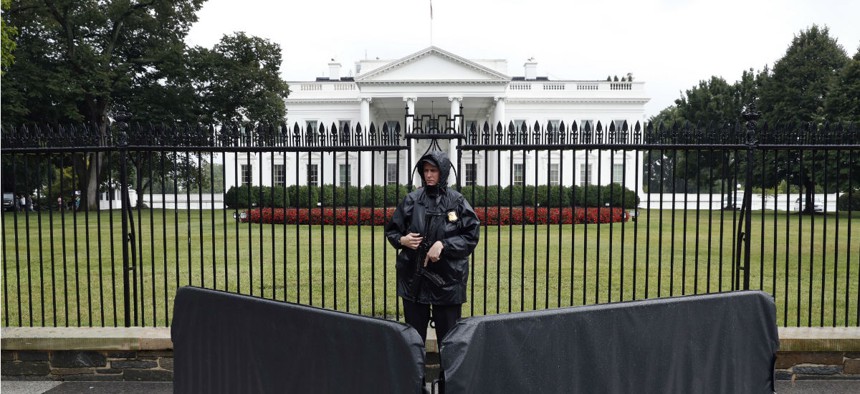Secret Service Overtime Bill Moves Forward, Vets in Government Make Less, and More
A weekly roundup of pay and benefits news.
A House panel voted Wednesday to advance a bill that raises the cap on total pay U.S. Secret Service employees can earn in 2017.
In August, Secret Service Director Randolph “Tex” Alles told USA Today that more than 1,000 agents had already hit the cap on the amount of overtime pay they can receive in a year. Alles initially blamed the funding crisis on the size of Trump’s family and his frequent travel, but later walked back his comments, instead saying it resulted from a number of long-running issues like staffing levels.
The 2017 Secret Service Recruitment and Retention Act (H.R. 3731), introduced Monday by Reps. John Katko, R-N.Y., and Elijah Cummings, D-Md., would raise the pay cap for Secret Service employees from $160,000 per year to $187,000 for 2017 and 2018. It also would direct the Secret Service to submit a report on the agency’s recruitment and retention efforts, including data on attrition, morale issues and strategies to address these issues.
The House Oversight and Government Reform Committee approved the bill without amendment and by voice vote.
“The men and women of the Secret Service deserve to be paid for the hours they work, period,” Katko and Cummings said in a statement. “They put their lives on the line every day and make tremendous personal sacrifices for our country. We cannot expect the Secret Service to recruit and retain the best of the best if they are not being compensated for the additional work that is demanded of them.”
The committee also approved a bill that would reduce public spending to support the activities of former presidents. The 2017 Presidential Allowance Modernization Act (H.R. 3739), introduced by Rep. Jody Hice, R-Ga., would cap former presidents’ pensions at $200,000 per year, and it would reduce the allowances for presidential offices over time.
For the first five years, the monetary allowance for presidents to spend on expenses like office space would be capped at $500,000. For next five years, that figure would drop to $350,000, and it would fall to $250,000 after that.
Congress passed similar legislation in 2016, but President Obama vetoed the bill, citing concerns with how it would be implemented.
The Office of Personnel Management announced Tuesday that the cohort of federal employees who are military veterans increased slightly in fiscal 2016, though former service members made on average $11,000 than their non-veteran counterparts.
As Jack Corrigan reports, the pay disparity may be in part a result of differences in job type:
“Non-veterans are more than twice as likely to hold professional positions than veterans. About 45 percent of vets hold administrative positions compared to roughly 37 percent of the overall federal workforce, and though only about 8 percent of federal employees hold blue collar positions, 14 percent of vets find themselves in blue collar jobs.
Still, officials have made great strides in increasing representation of veterans in the federal workforce since President Obama issued a 2009 executive order charging agencies to increase employment opportunities for those who have served. The percentage of vets working in government agencies has grown 5.3 points since 2009, when they made up about a quarter of the federal workforce.”
One potentially concerning aspect of OPM’s report is the drop in the percentage of veteran new hires, from 32.5 percent in 2015 to 31 percent in fiscal 2016. And in 2016, veterans were slightly less likely than non-vets to hold onto federal jobs two years after getting hired.








